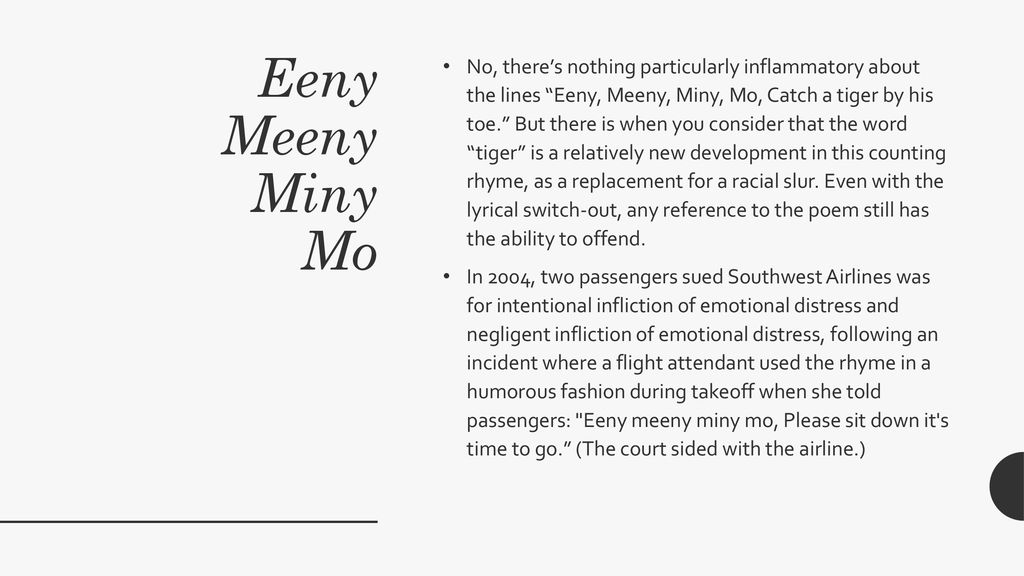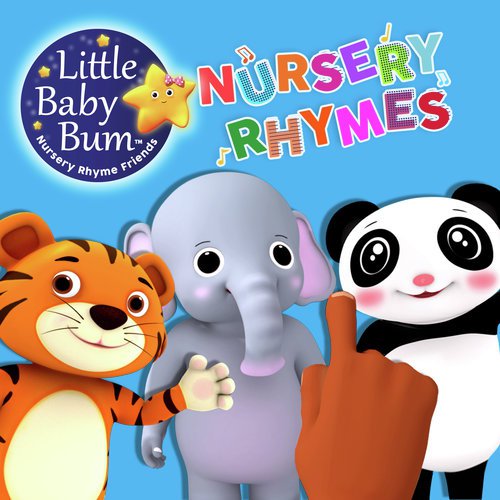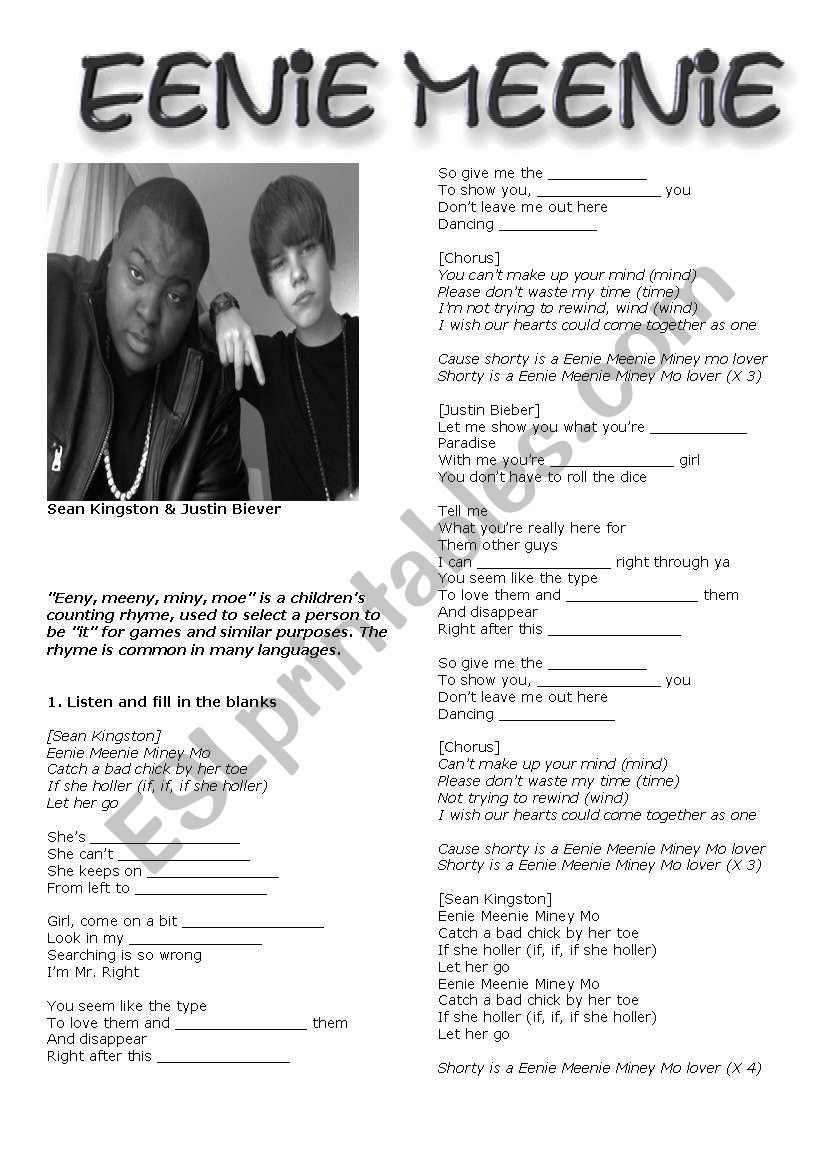

This is a sophisticated poetic device used by Jakobson (1960) in relation to the political slogan I like Ike, used by Eisenhower in his presidental campaign. In addition, the first word, eenie, is part of the second word, meenie. Therefore meenie, miney mo sounds better than miney, meenie, mo, and the order is unlikely to change. For instance, the first line of Eenie Meenie contains vowels that progress from front to back (as in the fee, fi fo of fee, fi, fo, fum or in ee, eye, ee eye, oh of Old McDonald Had a Farm). Is it racist? It all depends on who or what you’re catching, and how you catch that person or thing."More suble poetics also exist. It’s been around for a long time and it’s found in a great many cultures. So what is the origin of eeny meeny miney moe? No one really seems to know for sure past everyone agreeing that it’s a counting rhyme. In his book, he included fifty variations of the counting rhyme which included many different specimens being caught by the toe or the tail or even by their thumb! Some of those variations dated back to Britain and the early 1700s with implications that the rhyme was older than that. Interestingly enough, American h istorian, chemist, and bibliographer of science Henry Carrington Bolton (29 January 1843- 19 November 1903) published a collection of children’s counting rhymes in 1888. The Cornish in England had an old shepherd’s count known as a shepherd’s score that goes like this. The Dutch recite the same rhyme this way. This same rhyme with its variations exists in other cultures as well. Meanwhile, in England, children were still singing: The following are used in the United States for the selection of a tagger. When the scholarly journal Notes and Queries published the counting rhyme in their February 1855 edition, it read as follows with a brief explanation of how the rhyme was to be used. The rhyme was also found in Rudyard Kipling’s “ A Counting-Out Song“, from Land and Sea Tales for Scouts and Guides, published in 1935. The last panel showed Calvin walking off, scuffed up, and asking, “Who writes these dumb things anyway?” Hobbes was lying on the floor when Calvin started playing with Hobbes’ toes saying, “ Eenie, meenie, miney, moe, catch a tiger by the toe.” Hobbes opened an eye to see what Calvin was up to as Calvin continued by saying “if he hollers.” Hobbes got up and glared at Calvin.

Interestingly enough, on Mathe “ Calvin and Hobbes” cartoon strip dealt with the rhyme. No one filed a complaint with the publisher of the book, and no one complained to the media about any potential racist overtones to the four nicknames used in the book.

In Salman Rushdie’s “ The Moor’s Last Sigh” published in 1995, the main character and his three sisters are nicknamed Ina, Minnie, Mynah and Moor. SIDE NOTE 3: For interest’s sake, Primark has 177 stores in the UK, 37 in Ireland, varying numbers in many European countries, and 7 in the U.S. If he can kill someone – regardless of culture or race or gender or zombie status - he does. Apparently he has not conscience and as such isn’t inclined to kill one person more than another. SIDE NOTE 2: Fans of The Walking Dead state that Negan is a ruthless sadistic killer who doesn’t discriminate against anyone. SIDE NOTE 1: At one time in the 20 th century, Brazil nuts were marketed as n*gger toes. It wasn’t long before others on social media followed suit in support of the man’s claim. The t-shirt was pulled from store shelves by Primark after someone objected to the item being available for purchase on the basis that it was racist.
#Eenie meenie miney mo rhyme series
The balance of the children’s rhyme was implied and not stated, however fans of The Walking Dead know the character called Negan who spoke the rhyme on the series ends the rhyme with, “Catch a tiger by the toe.” At the start of the year, there was an uproar over The Walking Dead t-shirt carrying the slogan eeny, meeny, miney, moe on the front.


 0 kommentar(er)
0 kommentar(er)
